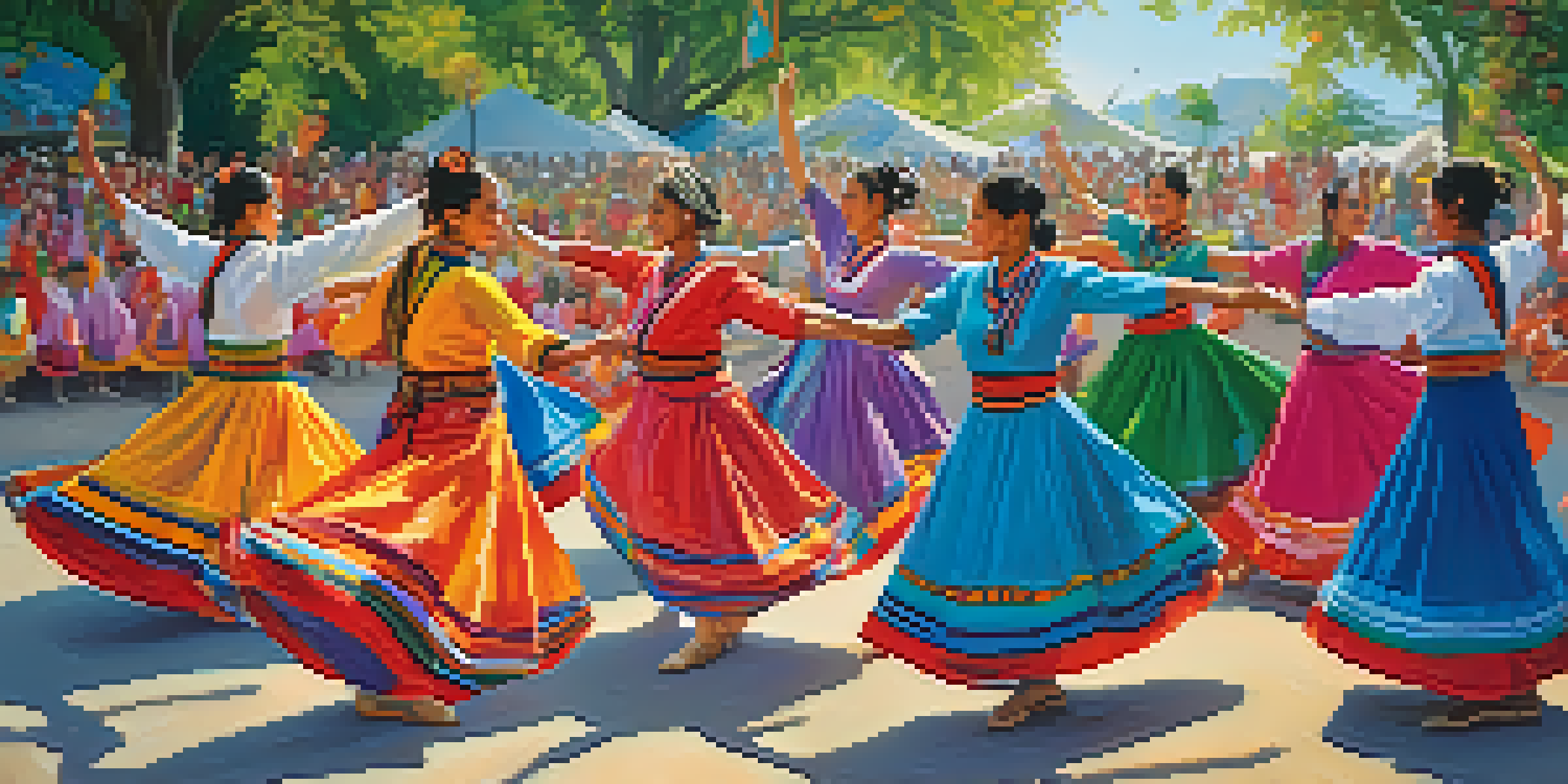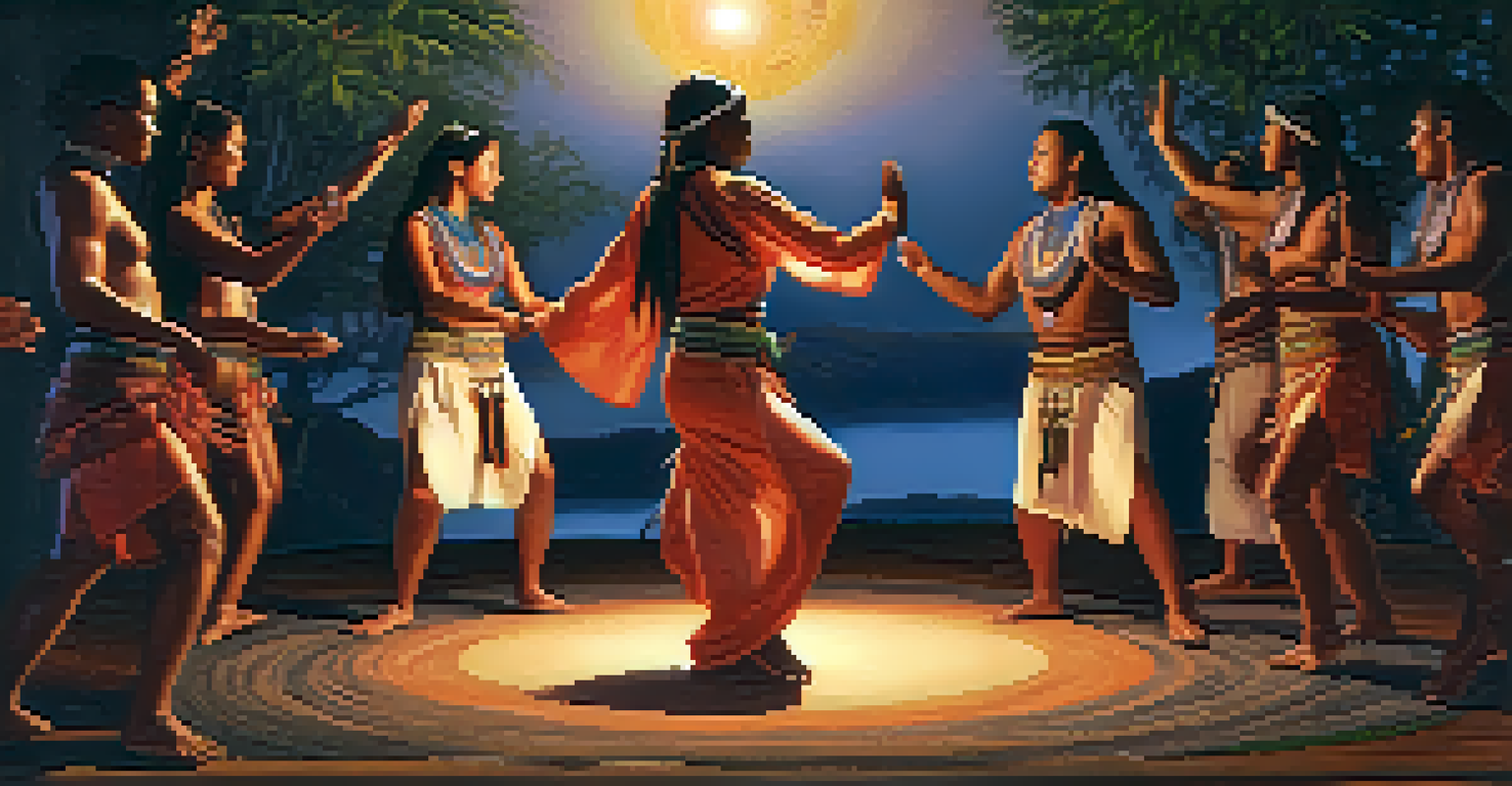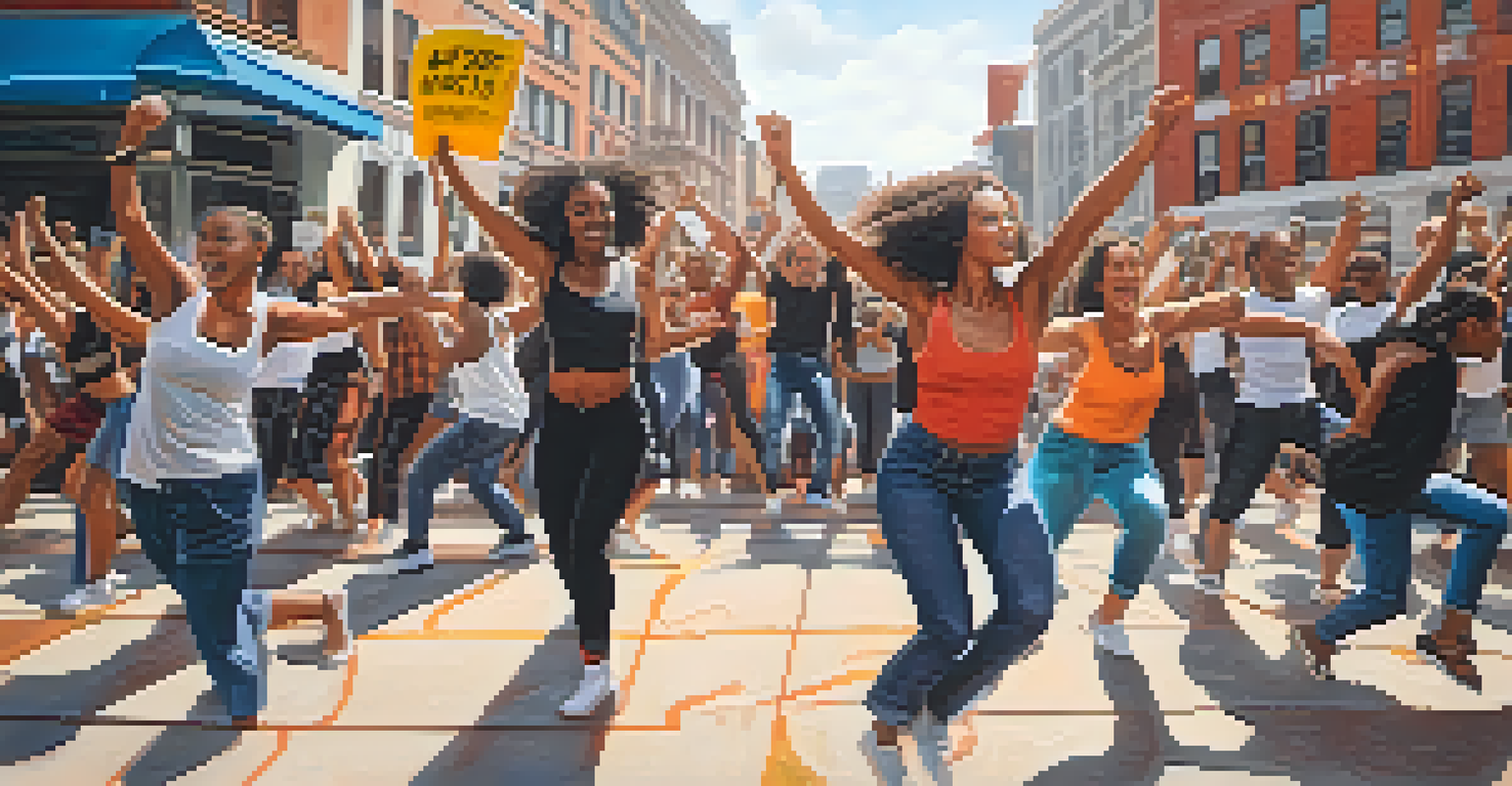The Evolution of Dance in Cultural Rituals Through History

The Roots of Dance: Ancient Rituals and Spirituality
Dance has been intertwined with human culture since ancient times, serving not just as a form of expression but also as a vital part of spiritual rituals. In many early civilizations, such as those in Mesopotamia and Egypt, dance was used to honor the gods and mark significant events, bridging the gap between the human and the divine.
Dance is the hidden language of the soul.
For instance, in ancient Egypt, priests performed elaborate dances during religious ceremonies to invoke the presence of deities, believing that movement could channel spiritual energy. These rituals often involved music, costumes, and intricate choreography, creating a multisensory experience that engaged the entire community.
As societies evolved, the role of dance in rituals became more complex, often reflecting the cultural values and social structures of the time. This evolution highlights how dance was not merely a pastime but a profound means of connecting with the spiritual world and reinforcing communal bonds.
Dance and Its Role in Social Cohesion
Throughout history, dance has also played a crucial role in fostering social cohesion within communities. It often serves as a communal activity that brings people together, creating a sense of belonging and shared identity. In many cultures, communal dances are a staple at celebrations, from harvest festivals to weddings, emphasizing unity and collective joy.

For example, the circle dances of Indigenous tribes in North America are not only artistic expressions but also a way to strengthen community ties and pass down traditions. These dances often incorporate storytelling elements, allowing participants to connect with their heritage while engaging in a collective experience.
Dance Connects Us Spiritually
Throughout history, dance has served as a vital part of spiritual rituals, helping communities connect with the divine and reinforce cultural values.
As societies developed, the significance of dance as a social connector remained strong. In modern contexts, dance continues to be a powerful tool for fostering relationships and promoting inclusivity, illustrating its timeless ability to bring people together.
Rituals of Healing: Dance as a Therapeutic Tool
In various cultures, dance has been utilized as a form of healing, both physically and spiritually. This practice often involves rhythmic movements and music designed to promote emotional release and well-being. Traditional healing dances can be found in many indigenous cultures, where they are performed to address illness and restore balance.
Dancing is like dreaming with your feet.
For instance, in African cultures, dance is often integrated into healing ceremonies, where dancers may enter a trance state to access spiritual guidance and facilitate healing. These performances are not just about movement; they are deeply symbolic and tied to the belief systems of the community, illustrating the interconnectedness of body, mind, and spirit.
As modern medicine has evolved, the therapeutic benefits of dance have gained recognition in contemporary settings. Dance therapy is now embraced as a legitimate form of treatment, showcasing how ancient practices can be adapted to meet the needs of today's society while retaining their cultural significance.
Dance in Celebration: Marking Life's Milestones
Celebrations often involve dance as a way to mark important life milestones. From births to graduations and weddings, dance serves as a universal language of joy and celebration, allowing individuals and communities to express their happiness and gratitude. These rituals often vary widely across cultures but share a common thread of bringing people together in joyous acknowledgment.
For instance, in Indian culture, the Baraat is a vibrant wedding procession filled with music and dance, symbolizing the happiness of the union. Similarly, in many African cultures, dances are performed to celebrate births and rites of passage, reinforcing community bonds and shared beliefs.
Dance Fosters Social Unity
Dance acts as a communal activity that brings people together, emphasizing shared identity and belonging during celebrations and significant events.
These celebratory dances not only honor significant life events but also connect generations, passing down traditions through movement. They remind us of the importance of community and shared joy, reinforcing the idea that life’s milestones are best celebrated together.
Cultural Exchange: Dance as a Means of Communication
Dance has often served as a powerful means of communication, transcending language barriers and facilitating cultural exchange. Through movement, individuals can express emotions, tell stories, and share experiences that words sometimes fail to convey. This aspect of dance has been particularly significant in multicultural societies, where diverse traditions intersect and influence one another.
For example, the fusion of African, European, and Indigenous dance forms in the Americas has created unique styles like salsa and hip-hop, demonstrating how cultural exchange can lead to innovative expressions of identity. These dance forms often tell stories of resilience, joy, and struggle, reflecting the rich tapestry of cultural influences.
As people continue to migrate and interact globally, dance remains a vital channel for cultural dialogue. It allows individuals to celebrate their heritage while also appreciating the rich diversity of others, fostering understanding and respect in an increasingly interconnected world.
Dance in Protest: A Form of Political Expression
Throughout history, dance has been used as a form of protest and political expression, allowing marginalized voices to be heard. Movements like the civil rights movement in the United States saw activists using dance as a tool for social change, demonstrating that art can be a powerful vehicle for advocacy. Through dance, individuals can convey messages of resistance and resilience, capturing the attention of audiences in a compelling way.
For instance, the choreography of the 'Black Lives Matter' movement incorporates dance as a form of solidarity and protest, highlighting the injustices faced by the Black community. These performances often take place in public spaces, transforming everyday locations into stages for social commentary, allowing dancers to reclaim their narrative.
Dance as a Political Tool
Historically, dance has been used as a form of protest, allowing marginalized voices to express resistance and advocate for social change.
In this context, dance becomes more than just movement; it serves as a call to action, uniting people in a shared mission. This evolution of dance as a political tool underscores its significance in shaping societal change and raising awareness about critical issues.
The Future of Dance in Cultural Rituals
As we look to the future, the role of dance in cultural rituals continues to evolve, influenced by globalization and technological advancements. Modern technology has opened up new avenues for dance expression, allowing artists to reach wider audiences and blend traditional forms with contemporary styles. This fusion can be seen in various performances that incorporate digital elements, enhancing the overall experience.
Moreover, as cultures interact more than ever, we are witnessing a resurgence of interest in preserving traditional dance forms while also exploring innovative adaptations. Communities are embracing their heritage while also welcoming new influences, creating a dynamic landscape for dance that reflects our diverse world.

Ultimately, the future of dance in cultural rituals holds the promise of continued growth and transformation. As we navigate an ever-changing world, dance will undoubtedly remain a vital part of our cultural expression, connecting us across generations and reminding us of our shared humanity.